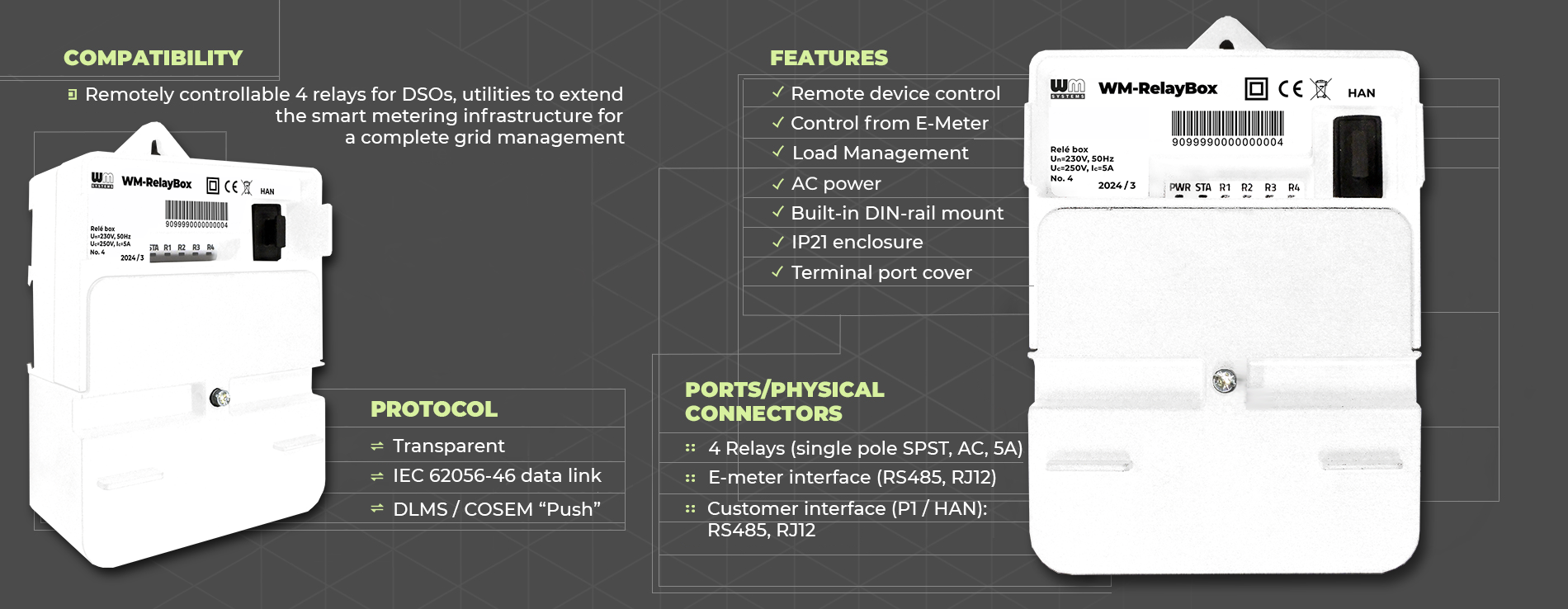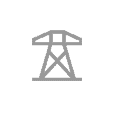Traditionally, energy meters were simple devices that measured power consumption, forming the basis for electricity billing. However, today’s energy meters are taking on much greater responsibilities. Beyond just power measurement, they are now essential tools for power quality monitoring, control, scheduling analysis, and security monitoring.
Most electricity meters do not contain switchable relays or do not support remote switching.
Adding a feature to smart meters which allows the utility and DSO to remotely turn connected devices on/off is a cost effective way to deal with this challenge.
Our load control box allows utilities to remote control connected appliances or devices in homes and businesses, aligning demand with available supply.
Extend your Smart Metering Infrastructure with the WM-Relaybox for a complete Grid Management.
Protect your investment! No need to change your existing meters.

Here’s how it benefits both utilities and consumers:
- Avoiding Blackouts: By matching demand with supply better, utilities can reduce the strain on the grid and avert power outages.
- Encouraging Conservation: By offering discounts to customers who participate in load control programs, utilities can incentivize energy saving.
- Supporting Renewables: Load control allows utilities to channel demand towards renewable energy when available, decreasing reliance on fossil fuels.
- Integrate contemporary technologies: Supporting the management and control of future-proof, renewable technologies in houses by integrating them into the grid – e.g. home solar panels, other modern energy carriers, charging electric cars – by enabling remote management of connected devices and equipment.
- Additional grid uses and industrial investments: Consumers can connect multiple devices to our RelayBox for remote management, such as:
- Solar photovoltaic farms are becoming increasingly common as we transition to a cleaner energy future. The WM-RelayBox allows operators to remote control how much energy is produced to operate efficiently.
- Wind power plants: Another important source of renewable energy. Wind turbines also need remote control features to guarantee optimal operations.
- Water pump control: To control water pumps in a variety of applications, such as irrigation, industrial water treatment, and municipal water supply.
- Boiler or pump control: Remote control of boilers or pumps in a variety of industrial and production applications.
- Control of ventilation system, cooling or heating system: Remote management of exhaust fans in a variety of applications, such as industrial ventilation, residential HVAC systems, commercial kitchen ventilation.
Our device allows remote-control of external devices connected to the energy meters Customer Interface.
Our 4-relay load control box is a compact and cost-effective solution. It allows utilities and DSOs to retrofit their electricity meters with smart remote control features for a fraction of the investment compared to a new smart meter.
Consumers can connect all kinds of equipment to the 4 relays in the RelayBox (switch boiler, pump, A/C, pool heating, ventillation system, cooling system, load management of solar panels, electric car charger, etc.) which can then be remote controlled by the utility or DSO in order to optimize the grid. In exchange, utilities offer different incentives for consumers.
The RelayBox connects to the electricity meter (via its RJ12 E-Meter interface) and receives unidirectional (one-way) DLMS/COSEM „push” commands and messages from the Head-end System through the meter. Then it executes the relay switch requests and sends all data provided by the smart meter to the Customer Interface output interface (RJ12, separate and isolated) of the RelayBox.
Consumers can use the P1 interface as a valuable tool that can help manage their energy usage and save money.
MAIN FEATURES
- Physical inputs:
- RS485 interface (RJ12 connector, 6P6C – for e-meter, protected by terminal cover)
- Customer Interface (HAN) output (RJ12, 6P6C, RS485 compatible, galvanically isolated voltage, protected by dust cover)
- Multiple relay control (on/off switching of each connected external devices by 4pcs relay)
- Controllable via connected electricity meter (RJ12) – unidirectional DLMS / COSEM communication with the connected meter
- Sending all meter data to the separate RJ12 (HAN) connector (DLMS / COSEM unidirectional communication to the Customer Interface output)
- Overvoltage protection according to EN 62052-21
- Configuration at production
- Watchdog
Application






